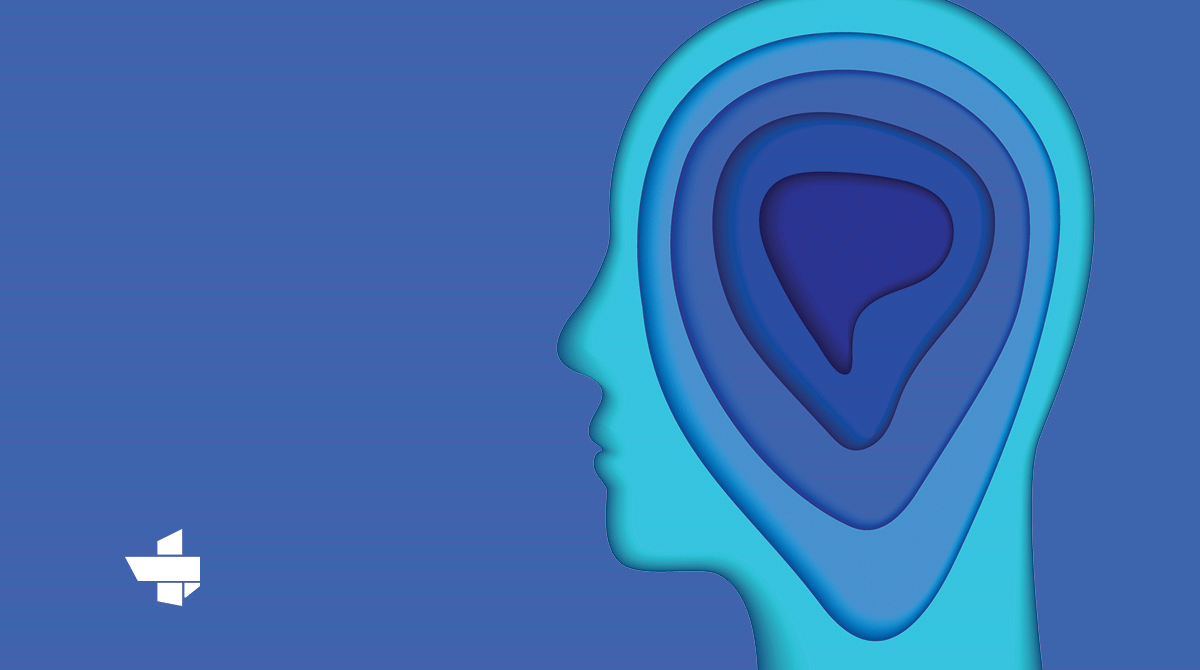Texas hospitals are facing an urgent crisis — one that began well before the COVID-19 pandemic. The demand for behavioral health care has swelled into a tidal wave, with record numbers of Texans needing support for mental health illnesses and substance abuse disorders. While the behavioral health epidemic existed prior to COVID-19, the pandemic has intensified the need for holistic health care that addresses mental and behavioral health in conjunction with physical wellbeing.
In response to this adversity, Texas behavioral health specialists have risen to the challenge, bringing compassion and innovation to a crisis that could otherwise feel irredeemably dire. These professionals are determined to change the narrative on mental and behavioral health and offer hope to those in need — and they’re changing lives every step of the way.
Behavioral Health in Lockdown
The COVID-19 pandemic revealed a great deal about the need for increased access to behavioral health care while also exacerbating the mental health issues of many children and adults throughout Texas. Over the course of the pandemic, as Texans feared for their physical health, their mental health suffered as well. New levels of stress, anxiety and depression plagued people of all ages as continuous uncertainty gripped the nation.
According to the American Psychological Association’s (APA) Stress In America report for 2020, subtitled “Stress in the Time of COVID-19, Volume One,” the average reported stress level for adults in the United States was notably higher in 2020 than in 2019, marking the “first significant increase in average reported stress since the survey began in 2007.” As the pandemic raged, adults struggled with job uncertainty, fear of infection, social isolation, financial losses and managing online learning for their children.
For all of these reasons and more, there has been a notable uptick in the number of patients in need of behavioral health care since the pandemic began. According to the APA, nearly twice as many psychologists reported receiving increased referrals in 2021 as compared to 2020.

Dr. Jeremy Yates, PhD, LPC-S, LCDC is an administrator at Texas Health Seay Behavioral Health Hospital in Plano, a hospital that provides inpatient and outpatient services for adolescents and adults. Since the pandemic began, Dr. Yates has noted an increase in the number of patients needing mental health care and treatment for substance use disorders (SUDs), especially those presenting with behavioral health concerns as a result of COVID-19 lockdowns and social isolation.
We’re now seeing more and more people saying, ‘Hey, what we’ve been through in the last two and a half years has taken a toll.’ So people are now reaching out for help, especially when it comes to drugs and alcohol.
DR JEREMY YATES, PHD, LPC-S, LCDC, ADMINISTRATOR, TEXAS HEATH SEAY BEHAVIORAL HEALTH HOSPITAL IN PLANO
Karla Ramirez is the director of Be Well Texas, a statewide initiative of The University of Texas Health Science Center at San Antonio (UT Health San Antonio), funded by Texas Health and Human Services that provides equitable access to treatment and care for substance use disorders. In recalling the influx of patients, Ramirez echoed Dr. Yates’ observations.

“The [SUD] numbers are astronomical, especially if you just look at overdose rates,” said Ramirez, who also is a licensed clinical social worker and faculty member of the Department of Psychiatry and Behavioral Sciences at UT Health San Antonio. “But for whatever reason, the attention isn’t put on it the way that it should be. In Texas, one in ten people have a substance use disorder, and it’s very deadly.”
While many patients have successfully found help through behavioral health programs, demand continues to be monumental and the lack of resources leave many without the treatment they need. During 2020 and 2021, while mental health care providers were flooded with a steady stream of new patients, backlogs grew longer. The APA reported that, in 2021, 68% of psychologists with a waitlist said it had grown since the pandemic began.
Along with wait times for care, patients face a lack of providers, insufficient insurance coverage and a general stigma regarding mental health, leading many to go without care. The statistics show the crisis at hand: In 2020, only 46.2% of adults with any mental illness and 64.5% of those with severe mental illness received mental health services, according to the Substance Abuse and Mental Health Services Administration. Some don’t even have a primary care provider who could refer them to a psychiatrist. For those with mid-level symptoms, much of the behavioral health care available is targeted toward those on the more extreme end of the continuum in terms of distress and inability to function.
Without accessible treatment for mental illness or SUDs, patients often end up in acute care hospitals and emergency rooms due to mental breakdowns, suicide attempts or addiction leading to overdoses. During the deadliest peaks of the pandemic, this put extra strain on hospitals with overflowing ERs, minimal staff and no available beds. Without a behavioral health expert on staff, hospital personnel without specialized training in the field were left to help diffuse their patients’ mental health crises.

“Our members have been vocal about is the rising behavioral health demands on all of their systems,” said Sara González, vice president of advocacy and public policy for the Texas Hospital Association. “Across the board, behavioral health and the need for better infrastructure has been top of mind for members of different varieties.”
“People with a SUD issue tend to utilize very high-cost care, like emergency departments,” said Ramirez. “It has to do with the fact that the care that’s accessible is so fragmented and it’s not integrated in the physical health world. For whatever reason, people think of addiction as a moral issue and not as a physical health issue.”
While Texas governmental agencies and community organizations have been making strides in building out the continuum of care, González said that the state’s population growth has caused demand to outpace the availability of mental health care. This was made even more challenging due to workplace staffing challenges faced by the health care industry during the pandemic – though González noted that the Texas mental health care field has suffered from shortages of psychiatrists and other mental health professionals for years.
Community-Based Solutions
In response to the massive challenges facing them, Texas health care providers have created innovative solutions to reach patients who might otherwise go without care.
“The general direction that we have seen, from a policy perspective, is collaborative care-type models that try to partner and bring mental health into the holistic health care delivery system for the patient, integrating it into primary care,” said González.
An example of this integration can be found at Texas Health Resources, which offers free mental health assessments for patients at multiple points throughout the system, spanning from primary care doctors’ offices to emergency rooms and urgent care clinics.
According to the APA, nearly twice as many psychologists reported receiving increased referrals in 2021 as compared to 2020.

“There’s always an opportunity for someone to be able to receive that free assessment, and I think that does help to ensure that there is access to care for everyone,” said Dr. Yates. “That’s the first place that you have to go to find out what your next steps are going to be. You meet with a licensed clinician and they’ll perform a very thorough evaluation. It is nice, from a mental health standpoint, that you don’t have to worry about having to pay anything, no matter what your insurance is.”
While he sees waves of new patients — including many adolescents — coming to Seay Behavioral Health Hospital for intensive inpatient treatment and long-term outpatient support, Dr. Yates also sees the bright side: more people recognizing and seeking help for mental illness.
“In a lot of ways, mental health is still not a subject that people want to talk about, but we’re making it easier now for people to speak up and say, ‘Hey, I’m suffering with depression,’ for example,” said Dr. Yates. “Just because you don’t talk about it doesn’t mean it’s not there.”
At Be Well Texas, Karla Ramirez and her team offer a virtual free clinic for indigent patients who need SUD and mental health treatment. They aim to schedule same- or next-day appointments for patients who need immediate care, and the clinic also provides medication and labs for free. When primary care providers and emergency room staff identify patients with SUDs, they can refer them to Be Well Texas. This means patients walk away with an appointment to get help, rather than leaving without any plan for addiction recovery.
Ramirez said that the virtual clinic attendees are often skeptical, wondering how a program with such comprehensive support, medication and labs can be free.
“Once they are enrolled in our program and they’re receiving the care, they’re just so relieved and so thankful of the impact that it’s having on their lives,” said Ramirez. “The medications that we use have been proven to be effective, especially in opiate use disorder and alcohol use disorder. So we’re seeing some really great outcomes.”
Using Telemedicine to Bridge the Gap
Other virtual support systems have proven to be effective as well. At The University of Texas Health Science Center at San Antonio, child and adolescent clinical psychologist Dr. Joseph C. Blader, PhD, has seen the benefits of virtual mental health support for children through the Texas Child Health Access Through Telemedicine (TCHATT) program. Dr. Blader is also a professor of child psychiatry in UT Health San Antonio’s Joe R. and Teresa Lozano Long School of Medicine.

“The vision was to be able to provide telehealth for kids who are referred by their schools,” said Dr. Blader. “Schools might identify behavioral or emotional issues with a student. They would discuss that with the family and mention [TCHATT] as an option. It’s totally at no charge. And it’s super convenient, potentially, given that it saves folks a lot of time and costs when you factor in transportation and childcare.”
TCHATT at UT Health San Antonio commenced in September of 2020. During the 2020-2021 school year, TCHATT received 1,200 referrals. The organization has partnered with 38 school districts to date. Since the beginning of the 2021-2022 school year, the program has received 1,900 referrals as of June 2022.
I think one of the most beautiful things about TCHATT specifically is that we have this opportunity to ensure that kids get help now so that when they reach adulthood, they aren’t dealing with these kinds of mental health issues.
REENA PARDIWALA, CLINICAL DIRECTOR OF TCHATT, CERTIFIED PHYSICIAN ASSISTANT PRACTICING CHILD, ADOLESCENT AND ADULT PSYCHIATRY, UT HEALTH SAN ANTONIO
And in turn, that not only helps to ensure their successful future, but it impacts the future of their children, our community and country.”
According to Dr. Blader, TCHATT is intended to be a short-term resource, and those children who needed more intensive long-term therapy or treatment are transitioned to the appropriate specialists.
“There has been a pretty significant upswing in various indicators of youth mental health needs, things like hospitalizations and ER visits and other survey data that indicate that, far from things getting better in the last couple of years, the need has actually intensified,” said Dr. Blader. “The vision was that TCHATT could be a pretty rapid and highly responsive way for kids to start getting some behavioral health attention and care.”

For Pardiwala, TCHATT offers a unique opportunity to help kids struggling with mental health concerns.
“We really get the opportunity to wrap care around these kids,” said Pardiwala. “Honestly, I’ve never felt like I’ve had this kind of opportunity as a provider for children and adolescents in the past. I think this program is really doing something special.”
